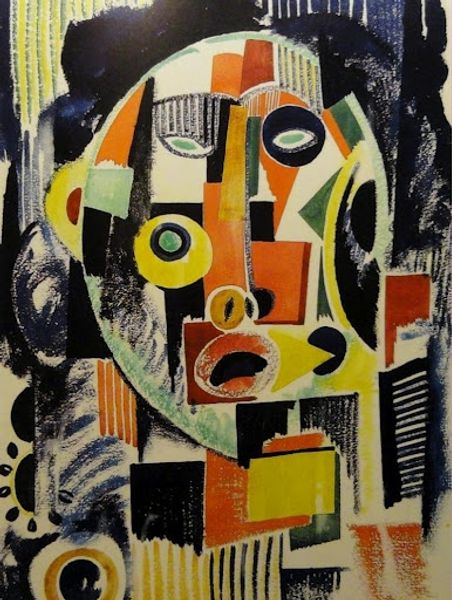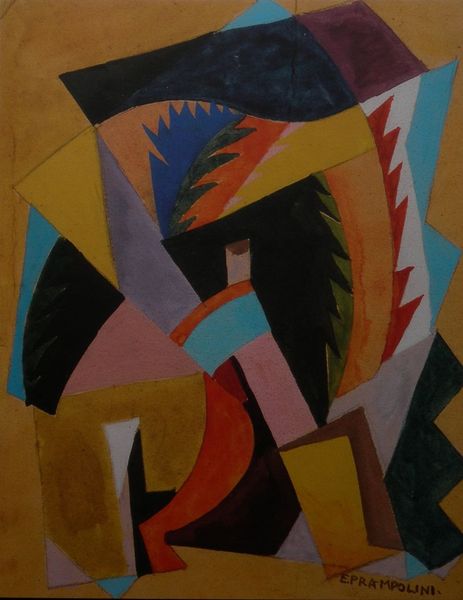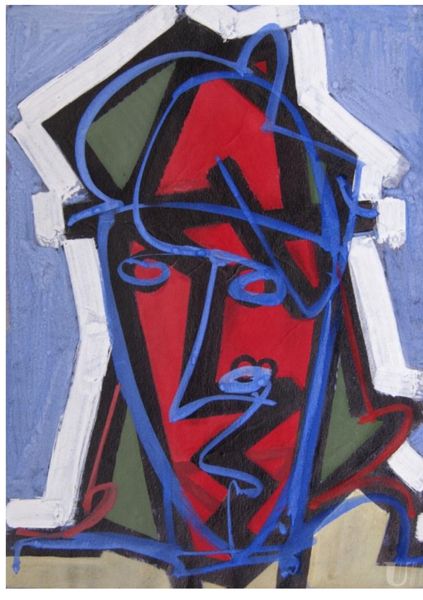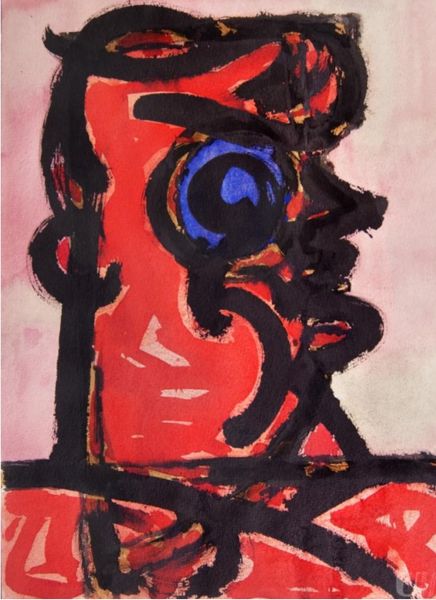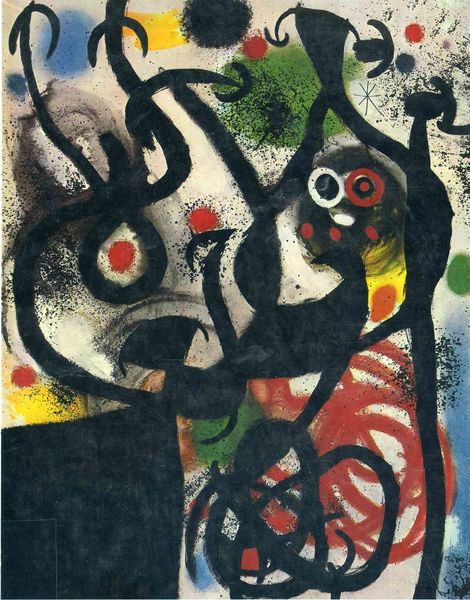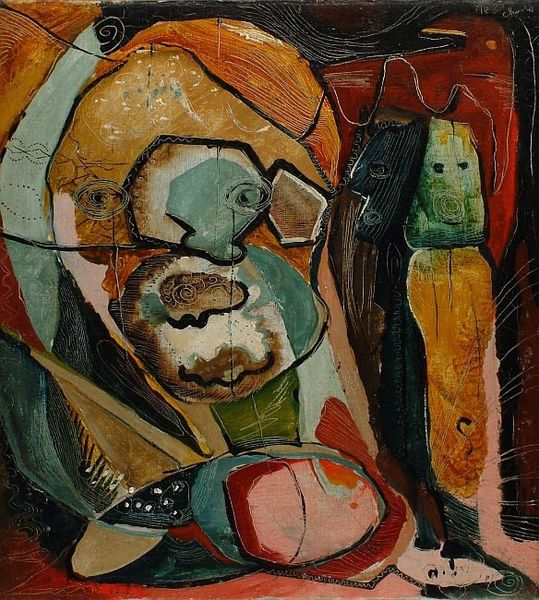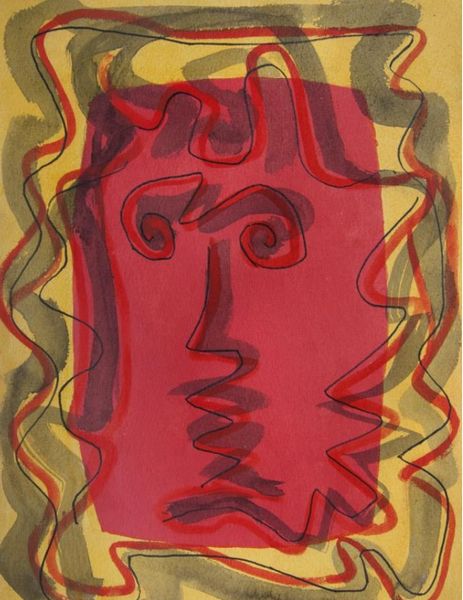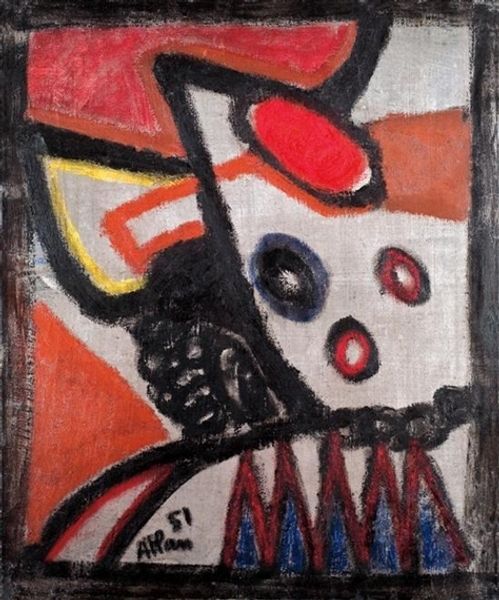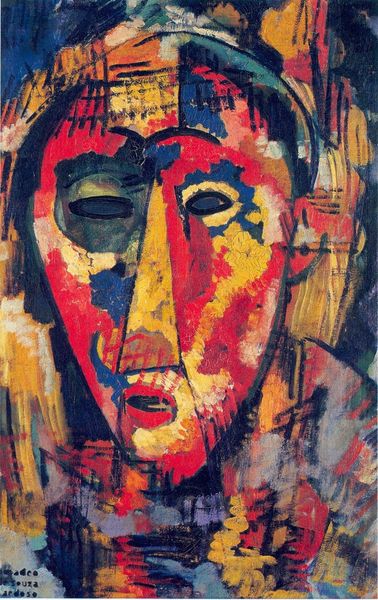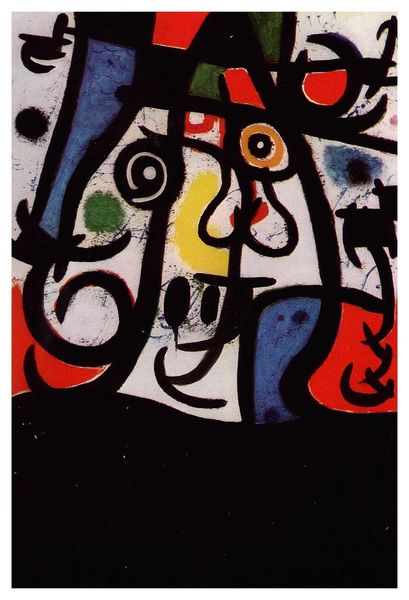
painting
#
portrait
#
cubism
#
abstract painting
#
painting
#
figuration
#
geometric
#
expressionism
#
painting art
Copyright: Public domain
Curator: This abstract painting by Amadeo de Souza-Cardoso, created in 1914, is entitled "Woman Servant." It's striking. What are your initial thoughts? Editor: My first impression is fragmented, almost chaotic. The use of bold geometric shapes and colors clashes somewhat, creating a feeling of tension rather than harmony. Curator: Let's consider the context. Souza-Cardoso was exploring the boundaries between Cubism and Expressionism. You see it here in how he renders a figure, recognizable but abstracted, emphasizing the physical act of painting, of layering pigment onto canvas. Editor: Absolutely. It pushes us to confront the historical portrayal of female servants and analyze class structures within this artistic rendering. The geometric representation abstracts her identity, almost stripping her of her individual features. How does this serve to amplify the servant's dehumanized status? Curator: I wonder if the deconstruction points more towards the artist engaging with materials and form rather than a social commentary on the status of servants. He was working within a period that saw the rise of industrial production; do you see a parallel between that mechanization and the artist reducing his subject to constituent parts, a way to deconstruct how we even see a human? Editor: An intriguing angle, to view the subject’s segmentation not merely as representation but instead also process-driven—considering, then, Souza-Cardoso’s engagement in exploring not just form but the changing societal production and labor standards as well, a transition into more systemized work models that mirrored the very fragmentation he depicted. Curator: The way the materials—the colors themselves and their application, the brushstrokes, the textured canvas—call attention to how the art was produced is certainly front and center, isn't it? Almost as a way of emphasizing artistic labor at a time of such significant transformation. Editor: True. By dismantling visual form, he highlights the conditions under which these figures—especially women—were objectified, thereby unveiling hidden intersectional power imbalances prevalent within contemporary structures. Curator: An interesting perspective. For me, examining the facture really emphasizes his individual engagement with avant-garde movements. It’s about pushing the medium itself to express these cultural changes. Editor: Well, viewing “Woman Servant” together offers a deeper perspective into how the production and representation in art intersect to illuminate historical paradigms, and their continuing ripple effects. Curator: Agreed. The layers of meaning are indeed captivating.
Comments
No comments
Be the first to comment and join the conversation on the ultimate creative platform.
